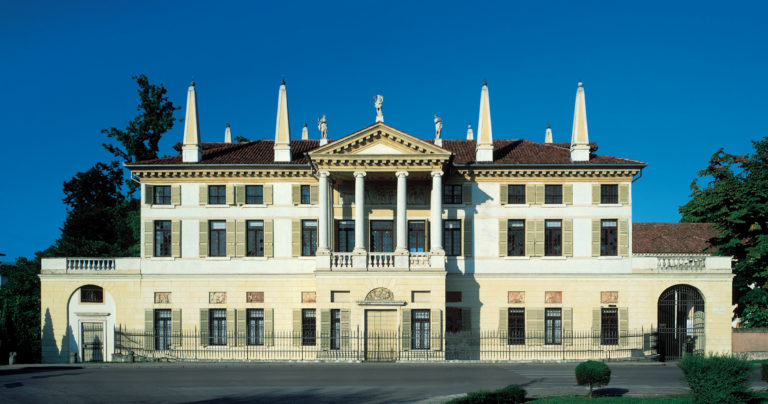The Villa Foscarini Rossi Shoe Museum was founded in 1995 by Luigino Rossi – a footwear entrepreneur – with the aim of satisfying his three greatest passions: shoes, art and his homeland. For this purpose, he purchased the seventeenth-century architectural complex of Villa Foscarini, a historic residence along the banks of the Brenta river, designed by Scamozzi and refurbished over time by talented architects and decorators.
Inside the main building is the exhibition of 1500 models of luxury women's shoes, produced by the company Rossimoda from 1947 to the present day: the result of Rossi’s collaborations with the most prestigious fashion houses on the international scene, a small but precious collection of ancient and ethnic footwear, assorted by himself over the years.
In 2003 the luxury finance group LVMH acquired the property, taking on the fundamental task of keeping the identity of the company intact and developing the Shoe Museum.
Thanks to its uniqueness and its position in the heart of the Riviera del Brenta district (renowned for its production of luxury women's shoes), the Museum also contributes to spreading the traditions that footwear manufacturers have been holding for centuries. Shoe making in the area dates back to 1268, with the School of the Venetian "Calegheri" (Shoemakers), a brotherhood of artisans, who had the onerous task of satisfying the wishes of the Venetian aristocracy, rich and capricious traders, who pushed them to compete with the rest of the world then known, in a sort of an "ante litteram" globalized market, stimulating them to create more and more precious and sophisticated products. Such a feature today still makes our region a privileged territory for the supply of quality products for luxury groups.
Fundamental is the role played by the Museum concerning the creativity of the area: the students of the modelling school, which has been training shoe designers since 1923, have the opportunity to observe the most interesting pieces of our collection to then draw inspiration from it. Further, they can book a workstation to access the digital photographic archive, consisting of almost 18,000 images, updated every season by the current company production, which represents a precious stimulus for future productions within the sector.
The intent of the exhibition is to document in the light of shoemaking the evolution of costumes in the second half of the 20th century, providing an insight into our history, in which social, economic and cultural influences have undoubtedly left the sign.
A further set-up criterion was then considered, in order to underline the dichotomy that characterizes shoes in balancing aesthetic and functional needs and to underline how even the most rebellious artist is influenced by his/her own territory in managing this contrast. Therefore, in the ground floor, the collaborations with German and American brands are characterized by pragmatism, while in the first floor the "Mediterraneans" (French, Italian and Spanish brands) definitely favour a deep aestheticism rather than practical solutions.
On top of this, the choice of Villa Foscarini as a container for the collection: because this territory’s landmarks are precisely the civilization of the Venetian villas and the production of luxury footwear, with a sort of mutual influence between these two iconic characteristics. Moreover, the suggestive frescoes that enrich the guest house adjacent to the Villa also contribute to the harmony of this blend. Now transformed into a conference centre, the structure hosts prestigious events and enchants its guests with the decorations of the famous painters Domenico de ’Bruni and Pietro Liberi.
Starting from September, the Museum opens its doors again to everyone with the usual opening hours.
For more information: www.museodellacalzatura.it



